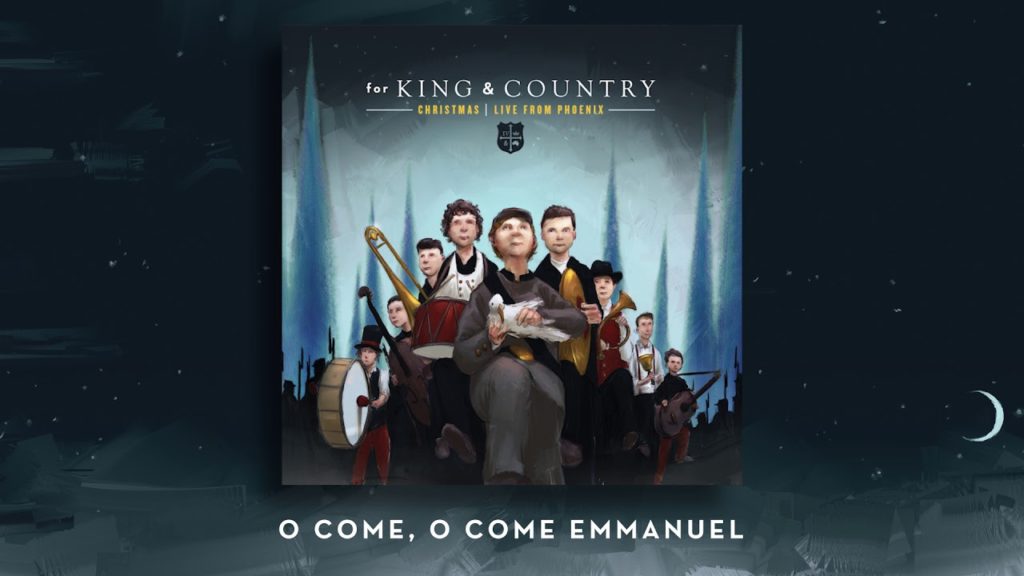
for King & Country: O Come, O Come Emmanuel

Read more

How Do You Measure Success on a Worship Team?

How does a worship team measure success? What does winning look like?
For some worship teams I’ve led, we asked, “Did we avoid a train wreck?” If the answer was yes, that Sunday landed in the “win” column.
Avoiding a mid-song meltdown is a good thing. But once you move past mere musical survival, what does success look like?
Some would say excellence.
Unfortunately, measuring excellence for the worship team is subjective:
- Did I worship well?
- Did I do a good job inviting and encouraging others to worship well?
- Did I have musical and technical…awesomeness?
Measuring our success is tough. But measuring our failure? That’s easy:
- My head was stuck in my music stand the entire set.
- She closed her eyes the whole time and ignored the congregation.
- He botched two transitions.
- You fumbled the words on that verse.
- I came in late on that bridge.
It’s tough to improve when you’re chasing some vague notion of “excellence” with no tangible milestones to gauge progress. And, “Try not to suck,” is not an excellence-inspiring goal.
But think about this: If I’m trying to lose weight, what’s my measure of success?
The numbers on the scale.
The fit of my fat pants.
The number of my chins.
Now, if I’m serious about losing weight, those can’t be the only things I measure. Those are known as “lag measures.” They show up after I’ve done the work. I can’t stand on the scale and will it to read my college-freshman-year weight.
Read more

Worship: Well-Crafted, Authentic and Substantive

Being involved in discussions on what makes for good worship is an interesting experience. What I find in the midst of the back and forth banter is that the dialogue most often is not about the content and craft of worship, but its style. I am not suggesting for a moment that the style of worship is unimportant, but what I find problematic is the notion that what makes for good worship is what people believe will attract others; and they usually define attractive worship according to what they like.
Several years ago, I was out of town at a conference. On Sunday morning I made my way to a historic Congregational Church. The sanctuary was old, but well-kept and attractive. There was no screen for PowerPoint. The church has two traditional services on Sunday morning and two times for worship on Sunday evening it refers to as contemporary/liturgical. Every service was filled to capacity. The congregation was multigenerational and ethnically diverse. College students make up 38 percent of the congregation and 49 percent of the members are in their twenties. The pastor’s sermon was excellent — it was well-crafted, authentic and substantive. Indeed, the entire worship experience could be described in this way. (I forgot to mention that the Sunday I was there, they were taking in approximately 30 to 40 members at each of the four services.)
Read more

How to Encourage People to Sing in Worship

The diagnoses for why people don’t sing in church are many and varied. I tend to break these diagnoses down into three categories: strong opinions that I agree with, strong opinions that I do not agree with and empirically-verifiable scientific studies. Unfortunately, the last category is rare, which is surprising considering how many “labs” (churches) we have available to test! There have been some great studies on the benefits and effects of group singing — many with religious implications — but not many that tell us how to get people to sing.
That doesn’t mean that some of those strong opinions aren’t correct. Congregational music professionals can have some pretty good ideas on how to increase singing participation.
I’ve been a big fan of John Bell’s theories of how to get more people to sing. He writes about them in “The Singing Thing: A Case for Congregational Song.” At a workshop I attended, he said that he had been blessed “with a mediocre voice,” because when congregations heard him lead singing, they automatically thought, “I can do better than that, and I’d better help him out.” John has some practical ways to get people to sing, including teaching the songs to the congregation before worship (what a concept!) and using hand gestures to indicate pitch and rhythm.
One of my favorite scientific studies runs counter to a lot of conventional church wisdom. “The Science of Singing Along: A Quantitative Field Study on Sing-along Behavior in the North of England,” by Alisun Pawley and Daniel Müllensiefen, analyzed the participation of various patrons in English pubs. They found that people are more likely to sing along if
- A song has longer and more complicated musical phrases. This goes against the conventional wisdom that songs should be easy to sing. Apparently, the effort of belting out a long line takes more breath and effort.
- There are more pitches in the chorus hook. Again, a complicated melody with several pitch changes inspired more singing.
- The singer is male. Some folks explain this in terms of primal battle cries, but I think this has more to do with selection bias. Who doesn’t sing along with Aretha Franklin?
- The singer (a higher, male voice) has to expend noticeable effort.
Queen’s “We Are the Champions,” The Village People’s “YMCA,” and Bon Jovi’s “Livin’ On a Prayer” all made the top ten list for most-sung songs in pubs. They are not exactly standard hymn fare for the church. (A summary article with samples of the music can be found here.)
Read more

Ritual and Resistance: 6 Worship Suggestions

“ … ritual isn’t about expressing religious commitment at all, but about doing something in a way that marks the moment as different from the everyday and forces you to see it as important.” That quote came from an article about “Religion without God” that speaks of a growing movement of atheists to gather for “church” services.
As one person put it, “Singing awesome songs, hearing interesting talks, thinking about improving yourself and helping other people — and doing that in a community with wonderful relationships. Which part of that is not to like?”
Read more







